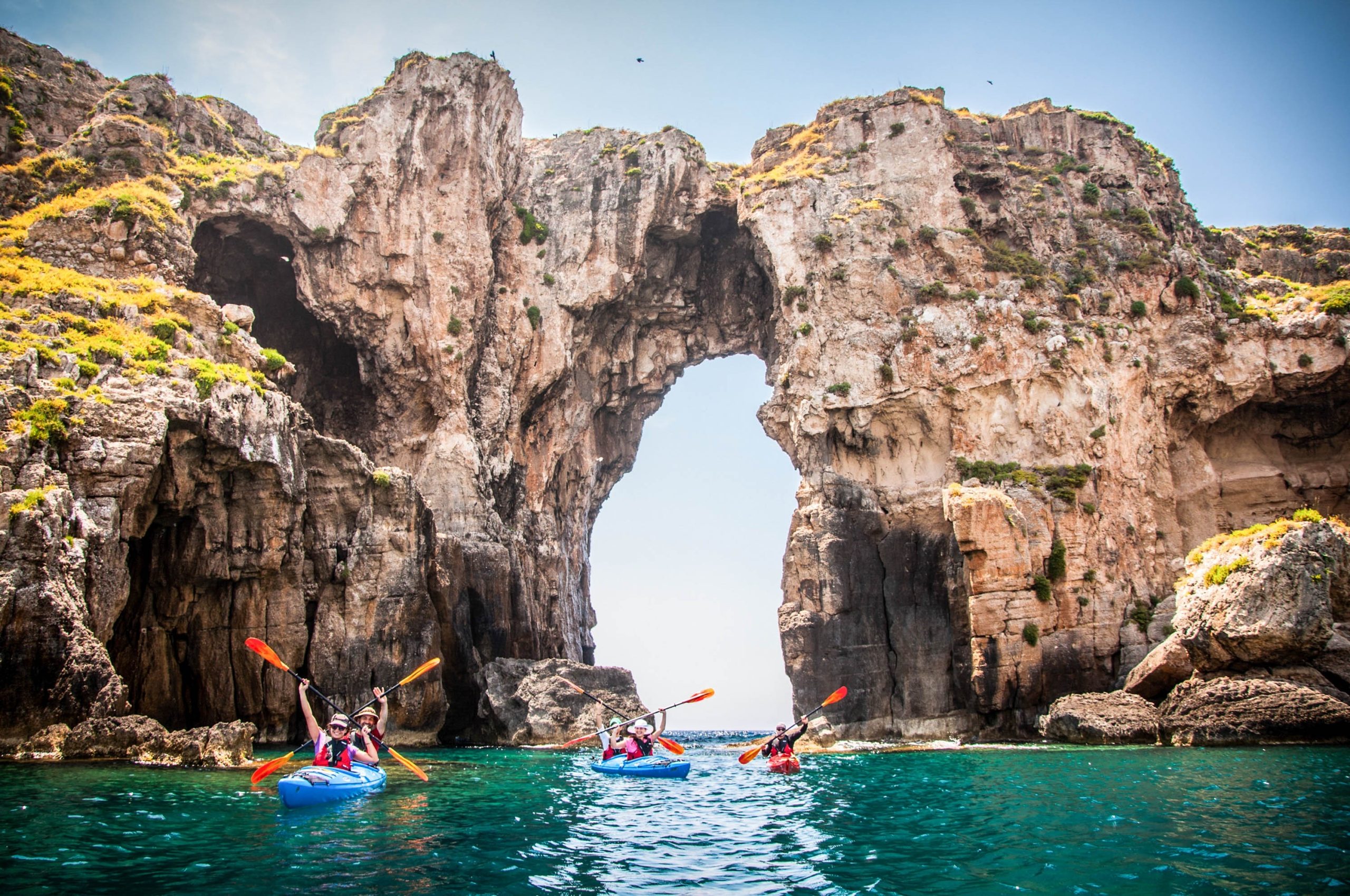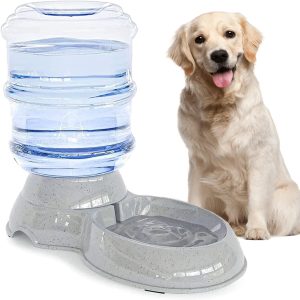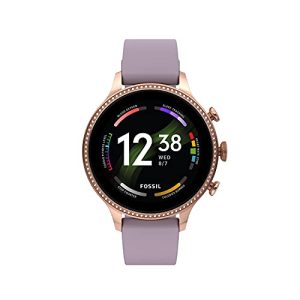Contents
- 1. Types of Kayaks
- 2. Essential Equipment for Kayaking
- 3. Choosing the Right Kayak for Your Adventure
- 4. Safety Precautions for Kayaking
- 5. Top Kayak Destinations
- 6. Benefits of Kayaking
- 7. Tips for a Successful Kayak Adventure
- 8. Kayak Fishing: A Thrilling Adventure
- 9. Exploring Whitewater Rapids
- 10. Kayak Camping for Adventure Enthusiasts
Are you ready for a thrilling adventure on the water? Look no further than “Kayak Adventures”! Experience the beauty of nature as you paddle through breathtaking landscapes, explore hidden coves, and encounter wildlife up close. With our convenient kayak bus schedule, you can easily chart your course and embark on an unforgettable journey. Whether you’re a seasoned paddler or a curious beginner, there’s no better way to immerse yourself in the wonders of nature than with Kayak Adventures. Pack your sunscreen and get ready to paddle your way to adventure!
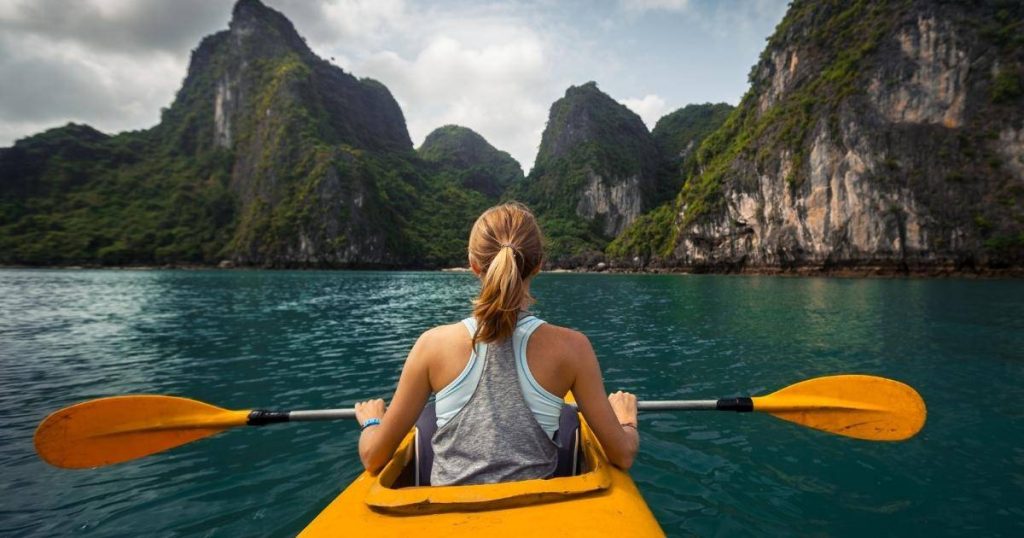
1. Types of Kayaks
When it comes to kayaking, there are several different types of kayaks to choose from, each designed for specific purposes and environments. Understanding these types will help you make an informed decision when selecting a kayak for your next adventure.
1.1 Recreational Kayaks
Recreational kayaks are the most popular choice for beginners and casual paddlers. These kayaks are typically stable, easy to maneuver, and offer a comfortable seating position. They are great for calm lakes, slow-moving rivers, and protected coastal areas. Recreational kayaks are a great option for those looking to enjoy a leisurely paddle and soak in the surrounding scenery.
1.2 Touring Kayaks
Touring kayaks, also known as sea kayaks, are designed for long-distance journeys and multi-day expeditions. They are longer and narrower than recreational kayaks, which enhances their speed and tracking capabilities. Touring kayaks also have ample storage space for gear and supplies, making them perfect for extended adventures on large bodies of water, such as oceans, large lakes, and bays.
1.3 Whitewater Kayaks
If you have a sense of adventure and enjoy the thrill of navigating turbulent rapids and fast-moving water, whitewater kayaks are the way to go. These kayaks are specifically designed to handle the challenging conditions of whitewater rivers. They are shorter and more maneuverable than other types of kayaks, allowing paddlers to perform quick turns and tricks. Whitewater kayaks also feature specialized outfitting, such as foam padding, to provide better control and protection in dynamic water environments.
1.4 Fishing Kayaks
For fishing enthusiasts, fishing kayaks offer a fantastic way to combine their love for angling with kayaking. Fishing kayaks are equipped with features like rod holders, tackle storage compartments, and adjustable seating to provide a comfortable and convenient fishing experience. They are often more stable and have a flatter hull design to allow for better stability and maneuverability when reeling in a catch. Whether you prefer freshwater or saltwater fishing, a fishing kayak is a great choice.
1.5 Sit-on-Top Kayaks
Sit-on-top kayaks are becoming increasingly popular due to their versatility and ease of use. They have an open-top design, allowing paddlers to sit on a molded seat on top of the kayak rather than inside a cockpit. Sit-on-top kayaks are stable and self-draining, making them ideal for recreational paddling, fishing, and even diving. They are a great choice for beginners and those who want a kayak that is easy to enter and exit.
2. Essential Equipment for Kayaking
To ensure a safe and enjoyable kayaking experience, it is important to have the right equipment. Here are the essential items you should have before hitting the water:
2.1 Paddle
The paddle is your primary tool for propelling and steering the kayak. It is crucial to choose a paddle that suits your height and the type of kayaking you plan to do. Paddles are available in various materials, such as aluminum, fiberglass, and carbon fiber, each offering different levels of durability and performance. Take the time to find a paddle with the right length, blade shape, and feathering to maximize your efficiency and comfort on the water.
2.2 Life Jacket
A life jacket, also known as a personal flotation device (PFD), is a vital piece of safety equipment for kayaking. It is designed to keep you buoyant in case of an accidental capsizing or immersion in water. Make sure to choose a properly fitting PFD that is approved by relevant safety standards. It should be comfortable, allow freedom of movement, and have multiple adjustment straps for a secure fit. Remember, wearing a life jacket can save lives, so never neglect this essential gear.
2.3 Spray Skirt
If you plan to paddle in rough water or cold conditions, a spray skirt is essential to keep water out of the cockpit. A spray skirt is a nylon or neoprene cover that attaches around the cockpit rim and your waist. It forms a watertight seal, preventing water from entering the kayak. This gear not only keeps you dry but also enhances the overall stability and control of your kayak. It is particularly important for whitewater kayaking and kayaking in wavy or windy conditions.
2.4 Dry Bags
When kayaking, it’s essential to protect your belongings from water damage. Dry bags are durable and waterproof bags that keep your gear, clothes, food, and electronics safe and dry while on the water. They come in various sizes and designs, such as backpack-style dry bags or small roll-top bags that can be secured to the kayak. Investing in good-quality dry bags will give you peace of mind and ensure that your essentials stay dry throughout your kayaking adventure.
2.5 Floatation Devices
Floatation devices, such as bilge pumps and paddle floats, are essential tools for self-rescue and safety on the water. Bilge pumps help you remove water from the kayak in case of a capsize or if water enters the cockpit. Paddle floats can be inflated and attached to the paddle, providing additional stability and buoyancy during re-entry into the kayak after a capsize. These devices are crucial for maintaining your safety and preventing potentially dangerous situations from escalating.
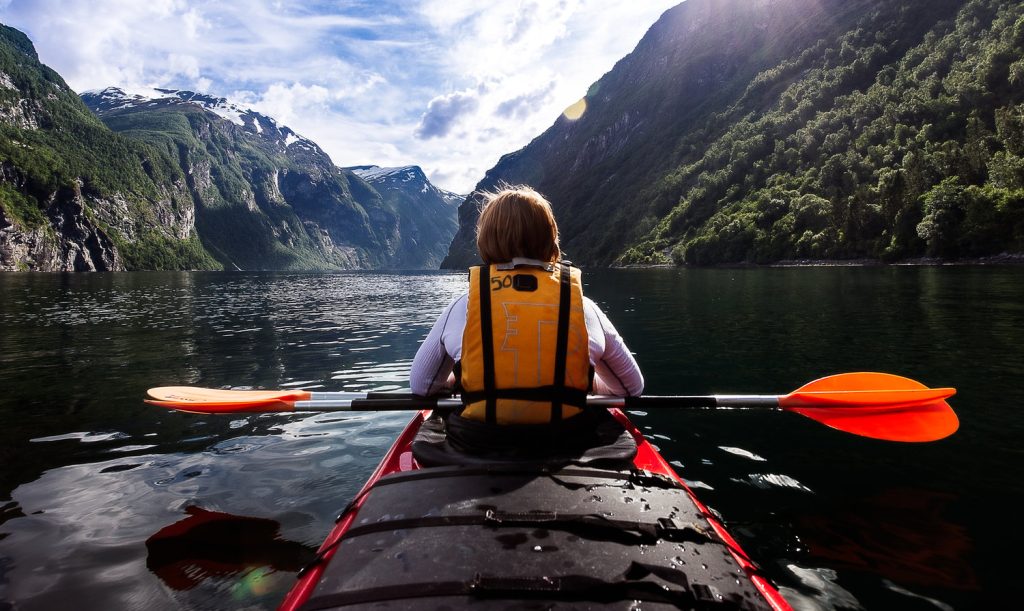
3. Choosing the Right Kayak for Your Adventure
Selecting the right kayak is crucial to ensure an enjoyable and safe kayaking experience. Here are some factors to consider when picking the perfect kayak for your adventure:
3.1 Consider Your Skills and Experience
Your skill level and experience in kayaking play a significant role in choosing the right kayak. If you are a beginner, it is best to start with a stable and easy-to-handle kayak, such as a recreational or sit-on-top kayak. These kayaks are forgiving and offer a gentle learning curve. As you gain more experience and develop your skills, you can progress to more specialized kayaks like touring or whitewater kayaks.
3.2 Determine Your Kayaking Goals
Think about the type of kayaking you plan to do and your specific goals. Are you interested in leisurely paddling on calm lakes and slow rivers? Do you aspire to venture onto open waters or embark on multi-day kayak camping trips? Are you seeking thrilling whitewater adventures? Understanding your kayaking goals will help narrow down your options and choose the kayak that aligns with your ambitions.
3.3 Match the Kayak to the Water Conditions
Different kayaks perform better in certain water conditions. Consider the type of water you will be paddling in – calm lakes, rivers, coastal areas, or whitewater rapids. Recreational kayaks are suitable for calm and slow-moving waters, while touring kayaks are designed for open water and more challenging conditions. Whitewater kayaks are built to navigate rapids, while fishing kayaks offer stability for angling in various environments.
3.4 Test Different Kayaks Before Buying
Before making a purchase, it is highly recommended to try out different kayaks to see how they feel on the water. Many kayak rental facilities or outdoor adventure centers offer demo days or rentals, allowing you to test different models. Paddling various kayaks will give you a better understanding of their performance, stability, and maneuverability. It also helps you determine which size and style suit your preferences and paddling style.
3.5 Seek Expert Advice
If you are new to kayaking or unsure about which kayak to choose, seeking expert advice can be extremely beneficial. Visit a local kayak shop or outdoor outfitter and talk to experienced staff members. They can provide valuable insights, recommend suitable kayaks based on your needs, and offer guidance on proper kayak sizing and fit. Engaging with knowledgeable experts will increase your confidence in selecting the right kayak for your adventure.
4. Safety Precautions for Kayaking
As with any outdoor activity, safety should be a top priority when kayaking. Follow these safety precautions to ensure a safe and enjoyable kayak adventure:
4.1 Take a Kayaking Course
If you are new to kayaking or want to improve your skills, consider taking a kayaking course. These courses are taught by experienced instructors who provide essential training on safety, paddling techniques, rescue skills, and navigation. Learning from professionals will equip you with the knowledge and skills necessary to handle various kayaking situations and boost your confidence on the water.
4.2 Wear Proper Gear
Always wear the appropriate gear for kayaking, including a properly fitting life jacket (PFD), a helmet for whitewater kayaking, and protective clothing suitable for the weather conditions. Dress in layers, wear quick-drying materials, and always bring a waterproof jacket or drysuit in case of unexpected changes in weather. Avoid wearing cotton, as it retains moisture and can make you cold and uncomfortable.
4.3 Check Weather Conditions
Before heading out on the water, check the weather forecast and tidal conditions for your planned kayaking area. Strong winds, heavy rain, or thunderstorms can significantly impact your safety and enjoyment on the water. Cancel or postpone your kayaking trip if weather conditions are unfavorable or if there are storm warnings. Always prioritize your safety and be prepared to adapt your plans accordingly.
4.4 Learn Basic Rescue Techniques
Knowing basic rescue techniques is essential for self-rescue and assisting others in case of an emergency. Learn techniques such as the wet exit (exiting the kayak when capsized), the T-rescue (assisting a capsized kayaker), and the Eskimo roll (righting the kayak without exiting). These skills provide reassurance and can prevent panic or dangerous situations from escalating.
4.5 Inform Someone About Your Plans
Before setting out on a kayaking adventure, inform a reliable person about your plans. Let them know your intended route, estimated time of return, and any alternative plans in case of unexpected circumstances. If possible, consider using a trip planning or tracking app that allows you to share your location with a trusted contact. This information serves as a safety precaution, ensuring that someone is aware of your whereabouts and can alert authorities if necessary.
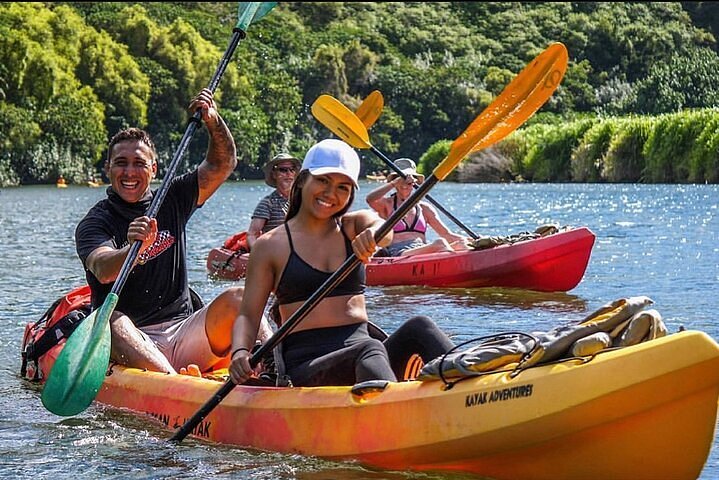
5. Top Kayak Destinations
Kayaking offers the opportunity to explore stunning natural environments and breathtaking landscapes. Here are some of the top kayak destinations around the world:
5.1 Sea Kayaking in the San Juan Islands, Washington
The San Juan Islands in Washington State, USA, are a kayaker’s paradise. Paddle through calm channels, encounter diverse marine wildlife, and enjoy breathtaking views of the surrounding mountains. The islands offer a wide range of kayaking routes suitable for various skill levels, from relaxing coastal paddles to challenging open-water adventures.
5.2 Exploring the Everglades, Florida
The Everglades National Park in Florida is a unique and diverse ecosystem, perfect for kayakers looking to immerse themselves in nature. Glide through mangrove tunnels, spot alligators and manatees, and marvel at the colorful bird species that call the Everglades home. The calm waters of the park’s rivers and coastal areas provide an excellent environment for both beginners and experienced paddlers.
5.3 Paddling the Great Lakes, Michigan
The Great Lakes of Michigan offer endless opportunities for kayaking adventures. With thousands of miles of coastline, paddlers can explore pristine beaches, remote islands, and picturesque lighthouses. From Lake Superior’s rugged beauty to the crystal-clear waters of Lake Huron, the Great Lakes region provides a diverse range of paddling experiences for all skill levels.
5.4 Discovering Milford Sound, New Zealand
Milford Sound, located on the southwest coast of New Zealand’s South Island, is renowned for its stunningly rugged landscapes and dramatic waterfalls. Kayaking through the fjord allows you to get up close and personal with the towering cliffs, spot seals and dolphins, and navigate pristine glacial waters. It’s an unforgettable experience that showcases the raw beauty of New Zealand’s natural wonders.
5.5 Kayaking in the Amazon Rainforest, Brazil
For an adventure like no other, head to the Amazon Rainforest in Brazil, one of the most biodiverse places on Earth. Paddle through lush jungle, explore narrow tributaries, and spot vibrant wildlife, including monkeys, toucans, and pink river dolphins. Guided kayak tours offer a unique opportunity to connect with nature and experience the awe-inspiring wonders of the Amazon.
6. Benefits of Kayaking
In addition to the thrill of exploring new waters, kayaking offers a multitude of benefits for both physical and mental well-being. Here are some of the advantages of kayaking:
6.1 Physical Fitness and Strength
Kayaking is a low-impact, full-body workout that engages multiple muscle groups, including the arms, shoulders, core, and legs. Paddling increases cardiovascular endurance, builds strength and muscular endurance, and improves overall fitness levels. Regular kayaking can help you maintain a healthy weight, improve flexibility, and promote better posture and balance.
6.2 Mindfulness and Stress Reduction
Spending time on the water promotes relaxation and mindfulness. The rhythm of paddling, the sounds of nature, and the serenity of the surroundings allow you to escape from the stresses of daily life. Kayaking provides a sense of tranquility and connection with nature, helping to reduce anxiety, improve mental clarity, and promote overall well-being.
6.3 Connecting with Nature
Kayaking provides a unique opportunity to immerse yourself in the natural world. Whether paddling through serene lakes, exploring coastal ecosystems, or navigating remote rivers, you can experience the beauty and wildlife of untouched environments. You can observe marine life, spot birds in their natural habitats, and witness breathtaking landscapes up close, forging a deeper connection with the natural world.
6.4 Unique Perspectives and Wildlife Encounters
From the vantage point of a kayak, you can enjoy unique perspectives and close encounters with wildlife. The quiet and unobtrusive nature of kayaking allows you to approach animals without disturbing them, providing opportunities to observe their behavior and natural habitat. Dolphins, whales, seals, birds, and even reptiles are among the many species you may encounter while kayaking, creating unforgettable memories and photographic opportunities.
6.5 Building Relationships and Socializing
Kayaking is a social activity that brings people together and fosters relationships. Whether you join a local kayaking club, participate in guided tours, or venture out with family and friends, kayaking creates camaraderie and shared experiences. It provides opportunities to meet like-minded individuals, participate in group activities, and establish lasting bonds through a shared passion for paddling.
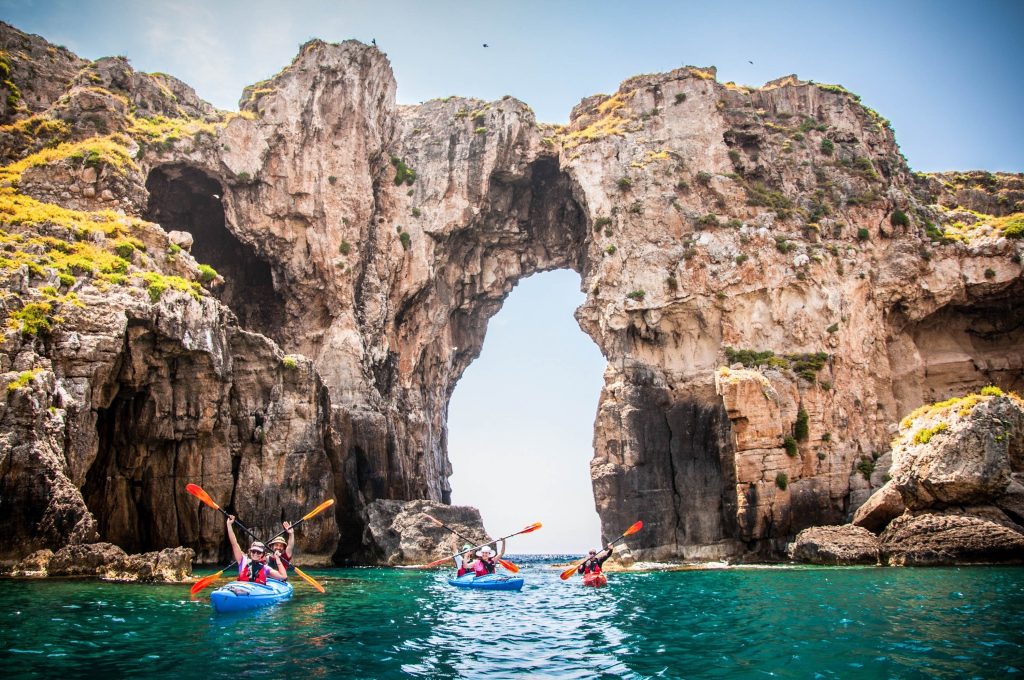
7. Tips for a Successful Kayak Adventure
To make the most of your kayak adventure, consider these helpful tips:
7.1 Plan Your Route and Estimate Time
Before setting off, plan your route and estimate the time it will take to complete. Research the distance, water conditions, potential hazards, and any required permits or access restrictions. Having a well-thought-out plan ensures that you are adequately prepared and have a clear understanding of your journey.
7.2 Pack Essential Supplies
Pack all the essential supplies you will need for your kayaking trip. This includes food, water, sunscreen, insect repellent, a first aid kit, navigation tools, and extra clothing appropriate for the weather conditions. Consider the potential challenges and duration of your journey to determine the appropriate quantity of supplies to carry.
7.3 Dress Appropriately for the Weather
Dressing appropriately for the weather is crucial to ensure your comfort and safety on the water. Wear lightweight, quick-drying clothing that provides protection from the sun (such as a long-sleeve shirt and a wide-brimmed hat). If kayaking in colder conditions, wear layers and invest in a wetsuit or drysuit to keep warm.
7.4 Stay Hydrated and Fuel Your Body
Kayaking is a physically demanding activity, so it’s essential to stay hydrated and fuel your body with proper nutrition. Carry an adequate supply of water and energizing snacks to keep your energy levels up. Avoid sugary and caffeinated drinks, as they can contribute to dehydration. Remember to drink regularly, even if you don’t feel thirsty.
7.5 Respect the Environment and Leave No Trace
As outdoor enthusiasts, it is our responsibility to protect and preserve the environments we explore. Respect the natural surroundings by adhering to the principles of Leave No Trace. This includes properly disposing of waste, avoiding damage to flora and fauna, minimizing noise pollution, and respecting wildlife habitats. Educate yourself on the unique ecosystems you may encounter and follow designated access points and regulations.
8. Kayak Fishing: A Thrilling Adventure
Combining the thrill of kayaking with the excitement of fishing, kayak fishing has become a popular outdoor activity. Here’s what you need to know about kayak fishing:
8.1 Equipment and Gear for Kayak Fishing
To go kayak fishing, you will need specific equipment and gear. In addition to a fishing kayak, you’ll need a fishing rod and reel, tackle box, bait or lures, and a net. It’s also essential to have additional safety gear such as a whistle, signaling devices, and a personal locator beacon.
8.2 Finding the Best Fishing Spots
Research and local knowledge are key to finding the best fishing spots. Consult local fishing guides, talk to experienced anglers, and study maps or online resources that highlight productive fishing areas. Look for areas with structure, such as submerged rocks, weed beds, or estuaries, as these tend to attract fish.
8.3 Techniques for Catching Fish from a Kayak
Kayak fishing requires different techniques compared to traditional fishing from shore or a boat. Learn casting techniques suited for fishing from a seated position in a kayak. Pay attention to your kayak’s stability, positioning, and maneuvering to maximize your chances of landing a catch. Patience, observation, and adapting to the conditions are key to successful kayak fishing.
8.4 Safety Tips for Kayak Fishing
Safety is paramount when kayak fishing. Always wear a properly fitting life jacket, as you will be surrounded by water and may encounter unexpected situations. Pack essential safety gear, including a whistle or personal locator beacon, so you can attract attention in case of an emergency. Be aware of the surrounding weather conditions and potential changes in water conditions.
8.5 Regulations and Permits
Before kayak fishing, familiarize yourself with the local fishing regulations and obtain any necessary permits or licenses. Different bodies of water and regions have specific rules regarding fishing seasons, catch limits, and size restrictions. Adhering to these regulations ensures the sustainability of fish populations and preserves the natural ecosystem.
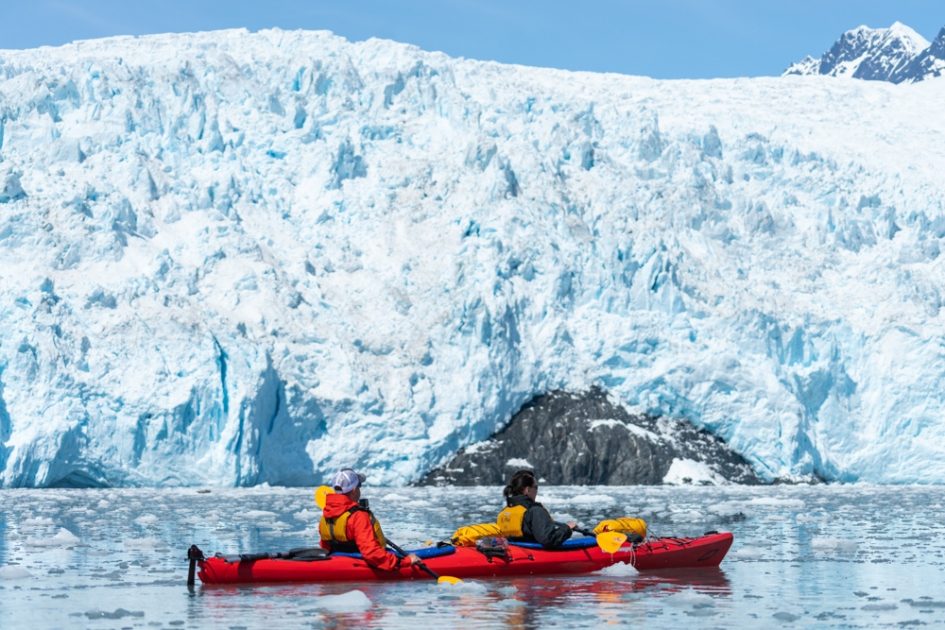
9. Exploring Whitewater Rapids
Whitewater kayaking is an exhilarating and adrenaline-filled adventure. Here’s what you need to know about exploring whitewater rapids:
9.1 Understanding Whitewater Classifications
Whitewater rapids are classified based on their difficulty and the skills required to navigate them. The International Scale of River Difficulty, commonly known as the Whitewater Scale, categorizes rapids from Class I (easy) to Class VI (extremely difficult and dangerous). As a beginner, start with lower-class rapids and progressively build your skills and experience before attempting more challenging runs.
9.2 Required Skills and Equipment
Whitewater kayaking requires a solid foundation of paddling skills and river-reading abilities. Learning how to effectively execute various paddle strokes, performing braces, and mastering rolling techniques is essential for navigating rapids safely. Additionally, appropriate safety gear such as a helmet, protective clothing, and appropriate footwear is crucial for whitewater kayaking.
9.3 Strategies for Navigating Rapids
Successfully navigating whitewater rapids involves careful planning, precise maneuvering, and quick decision-making. Study the rapids from shore before entering, identify potential hazards such as rocks or strainers (objects that can cause entrapment), and choose your route accordingly. Utilize eddies (calm areas of water behind obstructions) to catch your breath and make strategic moves.
9.4 Safety Measures for Whitewater Kayaking
Whitewater kayaking carries inherent risks, so taking appropriate safety measures is crucial. Always paddle with a group or at least inform someone of your plans. Wear a well-fitted helmet, a personal floatation device, and protective clothing. Practice self-rescue techniques, such as re-entering the kayak after a capsize, and learn how to perform basic rescues for fellow kayakers.
9.5 Joining Guided Whitewater Kayak Trips
If you are new to whitewater kayaking or unfamiliar with a specific river, consider joining guided trips. Guided trips are led by experienced instructors or guides who provide instruction, safety support, and local knowledge. They can enhance your skills, teach you the nuances of the river, and ensure a safe and enjoyable experience as you paddle through exciting whitewater rapids.
10. Kayak Camping for Adventure Enthusiasts
Kayak camping combines the freedom of kayaking with the immersive experience of camping. Here’s what you need to know to embark on a kayak camping adventure:
10.1 Essential Gear and Supplies for Kayak Camping
Kayak camping requires careful planning and consideration of the gear and supplies you need. Essentials include a tent or hammock, sleeping bag, cooking equipment, food, a water filtration system or purification tablets, and personal hygiene items. Pack your gear in dry bags or waterproof containers to keep them dry during the journey.
10.2 Choosing a Suitable Campsite
When kayak camping, choosing a suitable campsite is crucial for comfort, safety, and Leave No Trace principles. Look for established campsites or places with a soft, sandy shoreline for easy access. Consider factors such as wind direction, protection from the elements, availability of fresh water sources, and proximity to potential hazards like falling trees or rising tides.
10.3 Cooking and Food Storage on the Water
Plan your meals and select lightweight, non-perishable foods that are easy to prepare. Pack a camp stove or use a portable grill for cooking. When storing food, use bear-proof containers or hang them high above the ground in airtight bags. This helps prevent encounters with wildlife and protects the local ecosystem.
10.4 Setting Up Camp and Sleeping Arrangements
When setting up camp, practice minimal impact principles and leave your campsite as you found it. Set up your tent or hammock on durable surfaces and avoid damaging vegetation. Ensure that your sleeping area is well away from the water’s edge and secure your belongings to prevent them from being washed away by waves or tides.
10.5 Leave No Trace Principles and Conservation
Kayak camping provides the opportunity to connect with nature and appreciate our environment. Respect the wilderness by following Leave No Trace principles, including properly disposing of waste, minimizing campfire impacts, and respecting wildlife and their habitats. Leave the area as you found it, ensuring it remains pristine for future generations of paddlers to enjoy.
By following these tips and guidelines, you’ll be well-prepared to embark on a safe, enjoyable, and unforgettable kayak adventure. Whether you’re paddling calm lakes, navigating whitewater rapids, or exploring remote coastlines, kayaking offers endless opportunities for adventure and connection with the natural world. So grab your paddle, don your life jacket, and set off on your next kayaking escapade. Happy paddling!

